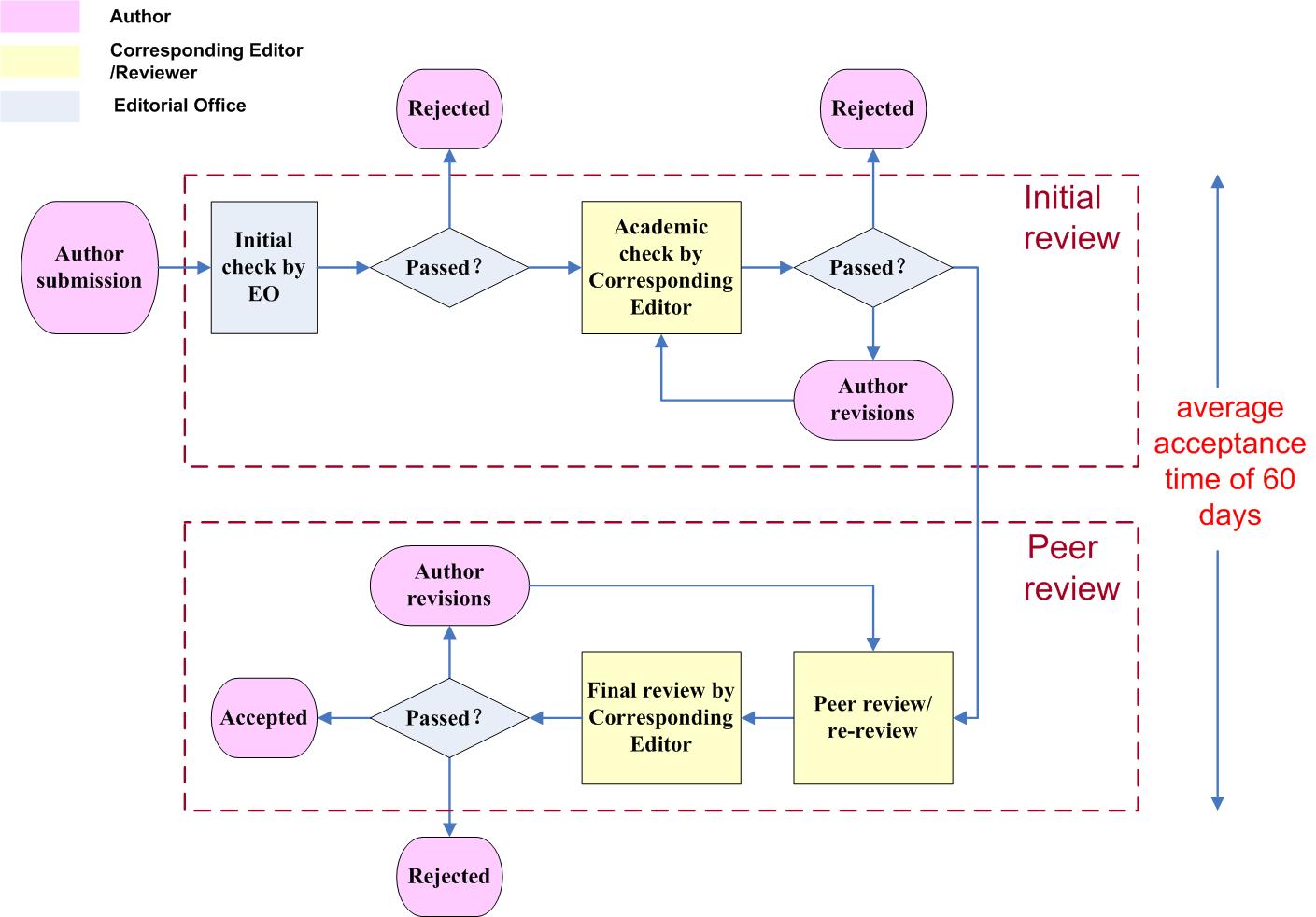All manuscripts submitted to the Journal of Radars are strictly and thoroughly peer-reviewed through a double-blinded process.
First, the editorial office reviews the submitted manuscripts for compliance with the basic requirements of the journal. Subsequently, the Executive Editor-in-Chief appoints a Corresponding Editor (It is usually held by an Editorial Board Member) according to the involved research direction to conduct a preliminary review with regard to the innovation and research values of the manuscripts. Following success in the preliminary review, four to six Reviewer from the same research direction conduct a peer review. Thereafter, the editorial office submits the review opinions to the Corresponding Editor, who then conducts a final review and accordingly decides for acceptance, rejection, or revision and re-review. For manuscripts requiring revision and re-review, the authors are mandated to revise them carefully, submit a detailed explanation of revisions to the manuscript, and reply to each reviewer’s comments individually.
Authors may submit a formal appeal request to object to the manuscript handling decision, but they must provide valid and sufficient reasons. Authors of each manuscript are entitled to only one such appeal opportunity, and the appeal decision shall be final.
The entire review process typically takes 30–90 days, and the editorial office tracks the progress of the manuscript in real time to ensure a timely review and informs the authors regarding the evaluation and processing opinions at each stage.
The important indicators of the peer review are the innovation and practical values of the research, which include the following five aspects.
(1) Does the paper have academic ethics issues? Does it meet the scope of the Journal of Radars?
(2) Is the topic of the paper meaningful? Is it cutting-edge and a research hotspot?
(3) Is a research paper innovative enough? Does a review paper have a certain breadth, depth, and foresight?
(4) Does the paper offer sufficient arguments, experimental details, and references?
(5) Are the structure, language, and logic of the paper rigorous?
Manuscript processing flow chart



 Submit Manuscript
Submit Manuscript Peer Review
Peer Review Editor Work
Editor Work




 微信 | 公众平台
微信 | 公众平台 

